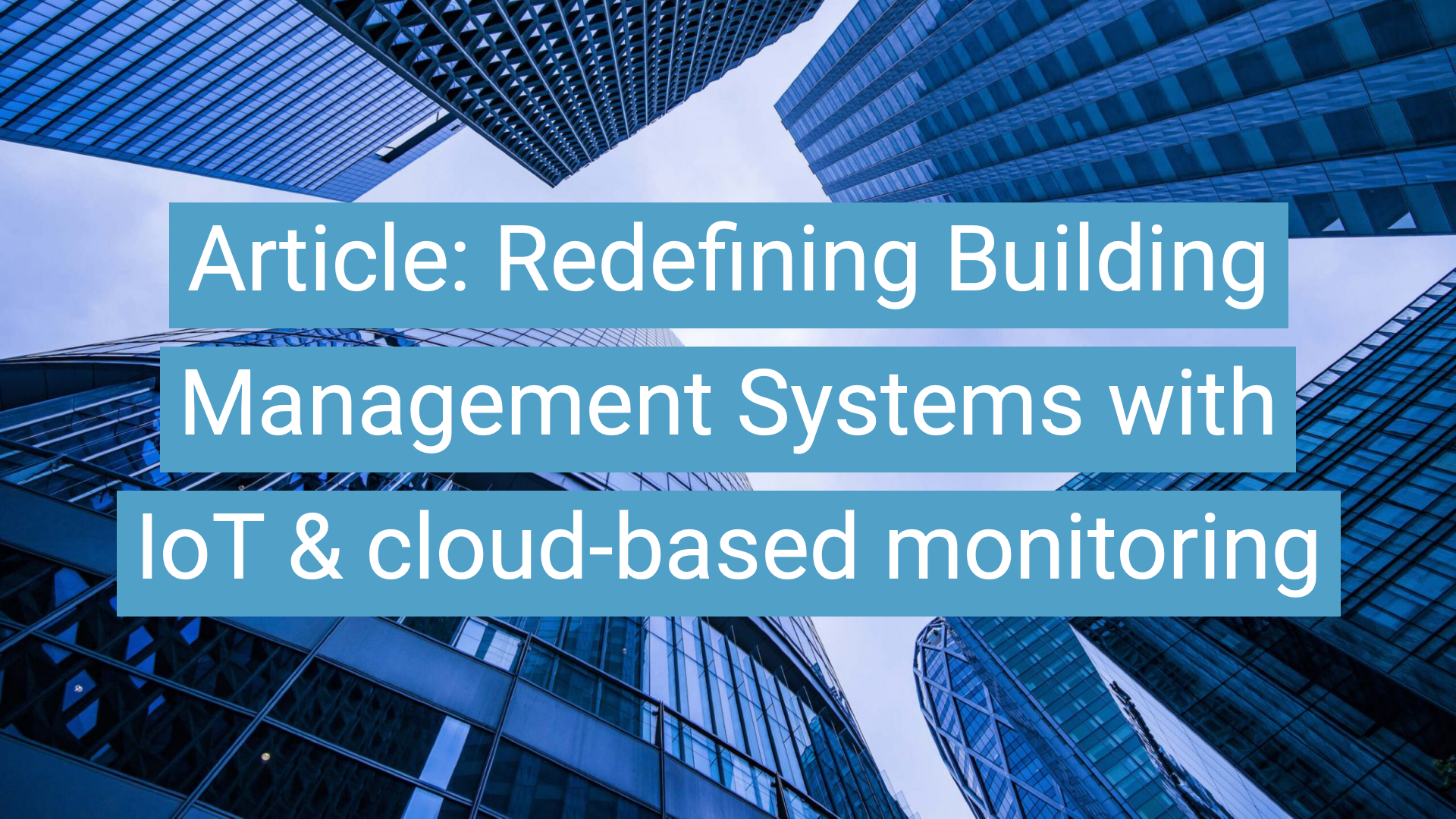In this Article
One of the many techniques employed by the industry to improve the reliability of assets in the industry is the building management system. It has one aspect of the asset performance management industry that has made it possible for building owners and managers to monitor and cut down the costs of operating their assets and improve its reliability and safety.
The building management system makes judicious use of various analytical tools, technologies, and data collection techniques for the sole aim of monitoring how a building performs. So what is the building management system and how can IoT redefine how things are done in this all-important industry?
One of the many techniques employed by the industry to improve the reliability of assets in the industry is the building management system. It has one aspect of the asset performance management industry that has made it possible for building owners and managers to monitor and cut down the costs of operating their assets and improve its reliability and safety.
The building management system makes judicious use of various analytical tools, technologies, and data collection techniques for the sole aim of monitoring how a building performs. So what is the building management system and how can IoT redefine how things are done in this all-important industry?
Building Management System
The building management system or building automation is an integrated system installed in buildings that regulate and monitors its electrical and mechanical components. Examples of such systems include fire system, security system, power system, lighting, ventilation, and other such systems that account for about 70% of the buildings’ utility.
Apart from monitoring the internal functions in the building, building management system is also designed to oversee access control and video surveillance system. Basically, building management system controls both the external environment and the internal environment of a building.
To effectively accomplish this task, BMS makes use of software programs and hardware that are configured in a hierarchical manner. When adequately implemented, BMS is capable of:
- Increasing overall productivity
- Monitor the consumption of energy in the building
- Improve the overall asset life
- Reduce maintenance time and cost
Drawbacks of the Traditional building management system
As effective as it is, one of the common drawbacks of traditional Building Management Systems is the cost of installing and running it. The cost of network integration and installation coupled with the cost of running the system itself often scare companies and building owners off implementing it. It owes much of its expensiveness to the traditional method of hooking up the system with run wires. While this is slightly effective method for buildings less than 100,000 square feet it becomes astronomically more expensive for bigger buildings.
So what if your company building is more than 100,000 square feet? To make BMS effective for companies with a larger business, you need to make use of IoT technologies.
IoT and the future of BMS
The new face in building management systems is the used of cloud-based monitoring to stay abreast of the internal and external environment of a building. It monitors all activities in a building very much like traditional BMS but now in a more effective way.
This new system uses a combination of IoT technologies powerful software, quality support and Machine Learning capabilities to monitor and improve building performance. It ensures effective utilization of space, vibration and noise monitoring, air quality improvement, and the overall management indoor climate at real-time.
Modern building monitoring system makes use of machine language algorithms to make predictions and forecasting via:
- Risk management: the predicting ability of the system ensures that the management is notified of any asset fault before the condition gets worse and thereby reduces cost by 15% and maintenance by 18%.
- Utility monitoring: AlphaX monitoring system measures the utilization of energy and increases it by 10%.
- Real-time analytical data capturing
Building management system offers company and homeowners the front row seat to monitor the indoor climate of their building via the psychometric chart initiated by the man who invented the modern air conditioning, Willis Carrier. This way, owners can monitor the comfort of their building with nothing more than their mobile phones and tablets.
Furthermore, the system enables owners to upload their floor plan as well as monitor the number of people that use your building and how effectively they make use of it. Additionally, the system makes use of the Air Quality Index to compute the pollution in the air thereby improving the overall health of inhabitants of the building.
To learn more about the AlphaX Cloud Based Building Management System click here!
Related Blog Posts
How Smart Cities Connect: Getting Started with Edge AI and IoT Technology
How to Get Started with Edge AI and IoT Technologies in Smart Cities: Overcoming Integration Challenges In recent years, the concept of smart cities has evolved from a futuristic Read More
5 Step Strategy: Ensuring Security and Privacy in 15-Minute Smart Cities
Introduction Ensuring security and privacy in 15-minute smart cities is a critical challenge as urban areas become increasingly connected through IoT and edge AI technologies. These cities aim to Read More
What is a smart city and the challenge of legacy systems
How to Get Started with Integrating Legacy Systems in Smart Cities Smart cities are transforming urban landscapes by leveraging technology to improve the quality of life for residents. However, Read More




